
Rocky Mountain coal mine in Alberta takes next step to expansion
In Alberta, a massive open-pit coal mine near Jasper National Park is hoping to expand...
This story was made possible by funding through the Local Journalism Initiative.
River banks have slumped, forests have been lost and buildings have shifted and cracked on soft ground. Lakes and ponds have drained in some places and formed in others where once-solid land has collapsed.
Permafrost, which underlies 40 per cent of Canada’s landmass, is continuously frozen earth beneath the surface layers that freeze and thaw with the seasons.
But with northern Canada warming about three times as fast as the rest of the world, climate change threatens the permanence of vast stretches of this frozen ground — and the ecosystems and communities it supports.
For the people living in the subarctic Dehcho region of the Northwest Territories, the changes have been stark.
“Our Elders definitely noticed a real change in how things look,” Dehcho First Nations Grand Chief Gladys Norwegian told The Narwhal in an interview. “They don’t have to be scientists to know, they just feel it and see it.”
While the impacts are felt most acutely in the North, permafrost thaw has implications for the global climate as well.
Scientists are now investigating how increased warming of the North could be part of a vicious cycle known as the permafrost carbon feedback loop — the more the climate warms, the more permafrost thaws and potentially emits more greenhouse gasses, which further warms the climate and thaws more permafrost.
Permafrost holds twice as much carbon as the atmosphere, and roughly 15 per cent of that stored carbon is vulnerable to being released, Merritt Turetsky, director of the Institute of Arctic and Alpine Research at the University of Colorado Boulder, told The Narwhal in an interview.
While Turetsky said emissions from permafrost are small relative to human-caused carbon pollution, they are an added burden on a climate already in crisis.
“It is a threat to climate; it will create additional warming on top of anthropogenic emissions,” she said.
The risks to infrastructure in Dehcho communities loom in the future — potentially amplified by the permafrost carbon feedback loop — but permafrost thaw has already taken a toll in the region, Norwegian said.
“Our winters are getting shorter and warmer, snow is melting earlier in the year, and the permafrost is thawing,” she said. “These changes are seen in the flow of the streams, the thickness of the ice on the lake.”
“Many of our forests are dying off and being replaced by wetlands,” she said.
For traditional land users, who harvest food by hunting and fishing, these are worrying shifts that have made travel more dangerous, Norwegian added.
“It’s very unpredictable and it puts a lot of strain on all of us that still really depend on the land.”
And now, with even more emissions potentially being released as part of the permafrost carbon feedback loop, permafrost melt threatens to accelerate further. And with it, the effects on the already altered region could accelerate as well.
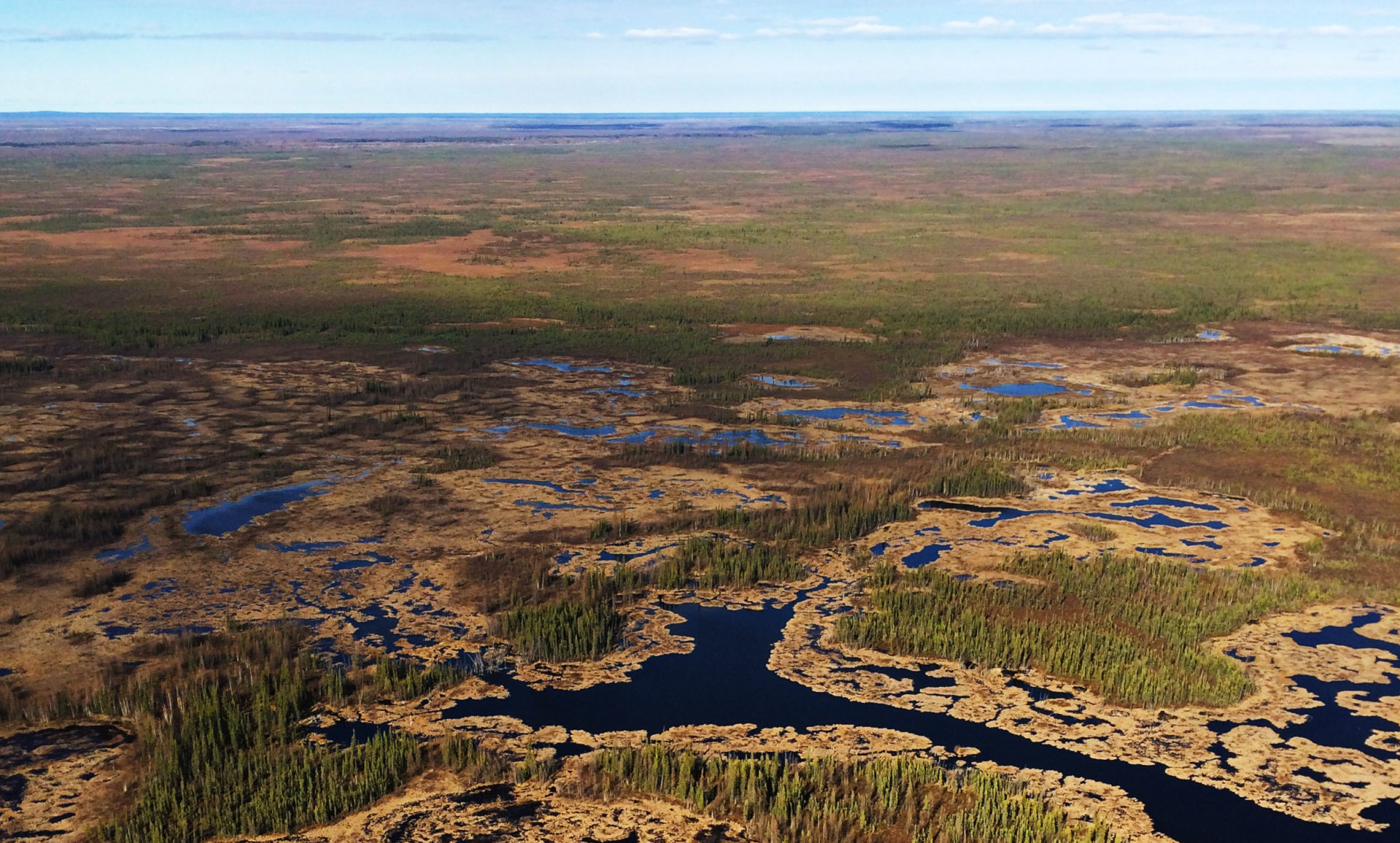
The Edéhzhíe Indigenous Protected Area encompasses 14,200 square kilometres located in the Dehcho region of the Northwest Territories. Dehcho elders say they have already observed dramatic changes to the landscape in the region, including forests dying off and being replaced by wetlands. Photo: Environment and Climate Change Canada
Whether greenhouse gases are emitted as a result of permafrost thaw depends on what’s frozen underground.
If the permafrost consists of sand, which contains very little carbon, then it may destabilize the ground when it thaws, but it won’t result in high emissions, Turetsky explained.
It’s a different story when the permafrost consists of peat and contains stores of carbon — the remnants of ancient plants and animals
As permafrost thaws, microbial communities wake up from a frozen slumber and begin to metabolize the carbon that’s stored in the soil, Lisa Stein, a professor of environmental microbiology at the University of Alberta, explained in an interview.
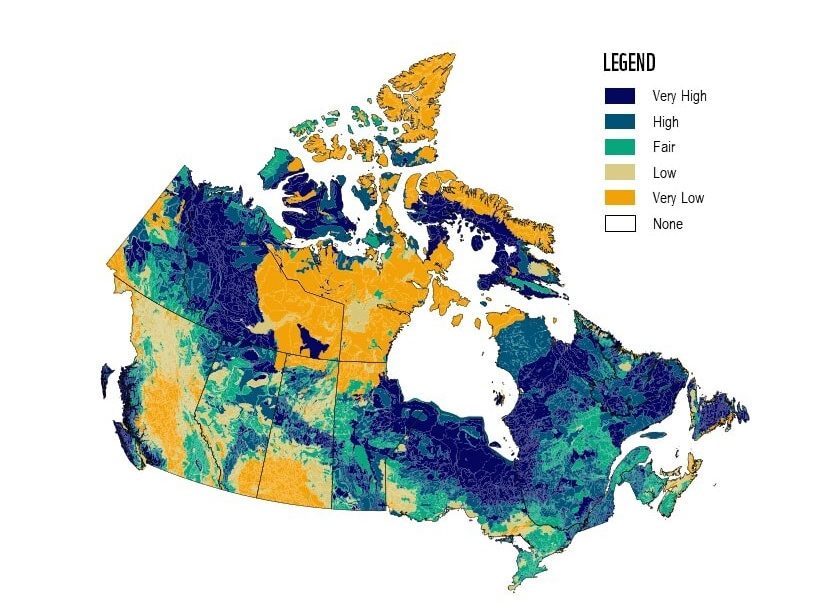
A map created by WWF-Canada for its 2019 wildlife protection assessment indicates the levels of soil carbon across Canada. As permafrost melts in the North, microbial communities wake up from a frozen slumber and begin to metabolize the carbon that’s stored in the soil, releasing it into the atmosphere. This is what’s known as the permafrost carbon feedback loop. Map: WWF-Canada
A diverse array of microbes breathe in oxygen and breathe out carbon dioxide, as humans do, Stein said.
Specialized microorganisms called methanogens, meanwhile, generate methane, a greenhouse gas more powerful than carbon dioxide, as a by-product of metabolism.
The rich organic and waterlogged soils left behind as permafrost thaws in certain areas “are the perfect conditions for methanogens,” Stein explained.
“They survive and grow and divide because they’re making methane,” she said. “That’s actually how they make a living.”
In response, some scientists are now investigating the potential to use another set of specialized microbes that consume methane, called methanotrophs, to help counteract the methane-generating methanogens awoken by permafrost thaw.
Peat moss, for instance, has a microbiome that’s rich in microbes that consume methane, Stein said.
“The idea would be that if you can encourage the growth of peat moss, then you’re also encouraging the activity of methane-consuming microbes,” she explained. “It’s a carbon sponge, essentially.”
Growing more peat moss was just one of the potential responses to the permafrost carbon feedback loop discussed during a March dialogue series hosted by the Permafrost Carbon Feedback Action Group.
Mike Brown, a Vancouver venture capitalist focused on climate change, established the group in partnership with the Permafrost Association of Canada to help address the challenge of greenhouse gas emissions from thawing permafrost.
The group plans to draft an “intervention roadmap” to guide policy responses to permafrost thaw in support of global efforts to slash carbon pollution.
“Emissions from permafrost can constitute a major global climate problem, one that’s potentially serious enough to make it much more difficult for us humans to achieve our net-zero carbon goals,” Brown said during his introductory comments to the dialogue series.
Over the course of the next century, permafrost thaw could emit as many greenhouse gases as deforestation and other land use change, Ted Schuur, a professor of ecosystem ecology at Northern Arizona University, said during the first webinar.
“When we think about climate change mitigation, which is keeping carbon out of the atmosphere, Arctic carbon emissions just makes that mitigation problem that much harder,” Schuur said.
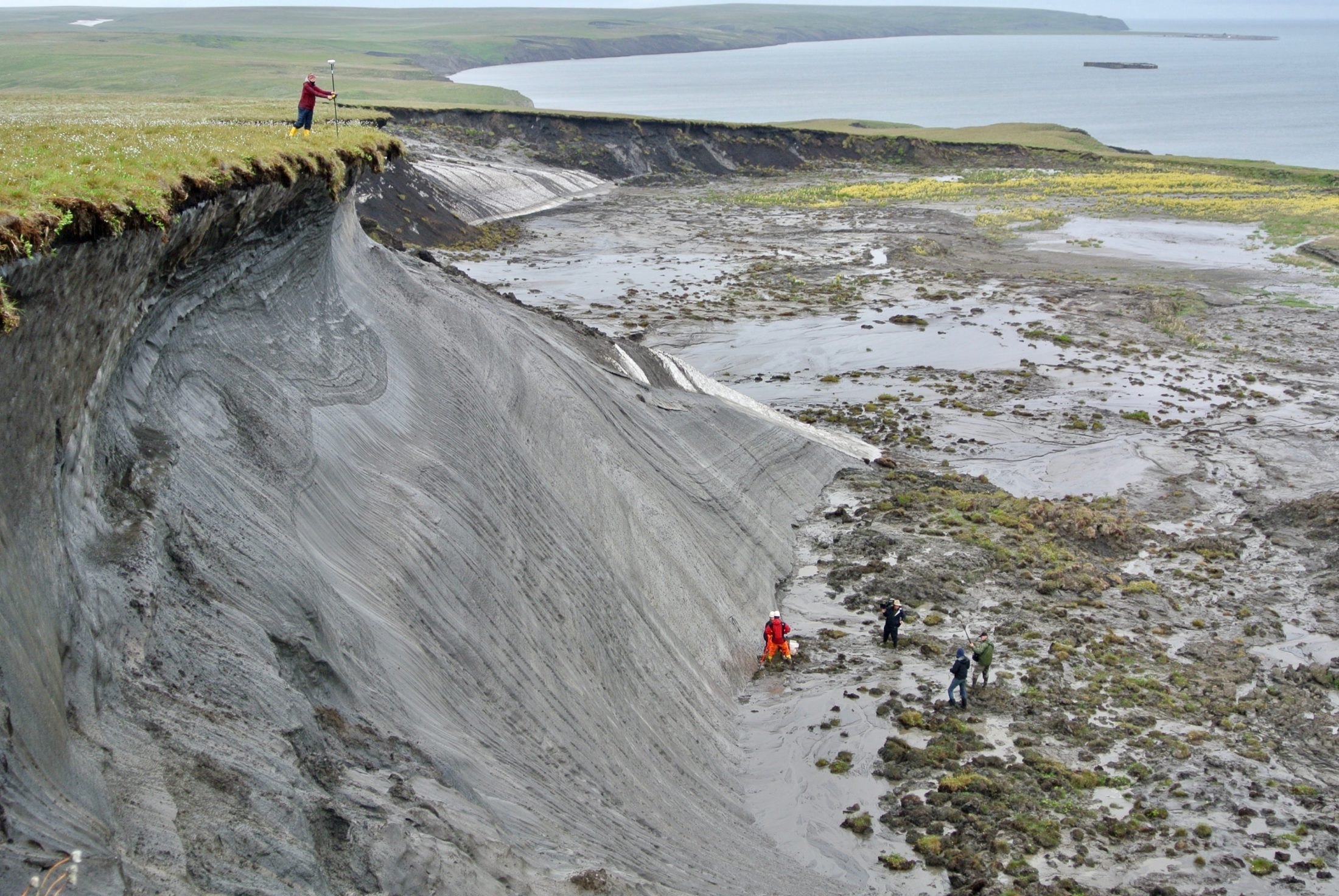
A researcher measures thawing permafrost on Herschel Island, a few kilometres off the Yukon coast. Dramatic changes to landscapes in the North could be accelerated by the permafrost carbon feedback loop. Photo: Boris Radosavljevic / Wikimedia Commons
The basic premise of solutions to the permafrost carbon feedback loop is simple: reduce permafrost thaw to reduce the emissions it releases. How to prevent permafrost thaw is where things get complicated.
In subsequent webinars, experts discussed ideas to help keep the Arctic cool and prevent further permafrost thaw, including land-use changes and the more controversial stratospheric aerosol injection.
One example of a land-use change came from northern Siberia, where Russian scientists have introduced Yakutian horses, reindeer, musk ox and other herbivores to Pleistocene Park to re-establish the grasslands of the mammoth steppe biome that was widespread during that last ice age.
The grasslands, which reflect more sunlight than the shrubs and forests they replaced, help keep permafrost cooler, John Moore, chief scientist at the College of Global Change and Earth System Science at Beijing Normal University, explained during the second webinar in the series.
While this type of landscape change could be included as part of a portfolio of options to help preserve permafrost in certain areas, Moore said it may not be a feasible solution on a broad scale.
Stratospheric aerosol injection, meanwhile, may offer broader cooling of Arctic and subarctic areas — but carries substantial risks.
Stratospheric aerosol injection is a type of solar geoengineering that involves spraying sulphate particles into the atmosphere to reflect sunlight, mimicking the effect of particles released during volcanic eruptions.
While experts say stratospheric aerosol injection could conceivably cool surface temperatures in the Arctic, it risks acid rain, which is detrimental to ecosystems, and depletion of the ozone layer, which offers protection from dangerous UV radiation exposure.
“Every now and then we get a really large volcanic eruption that dumps aerosols into the stratosphere, so high up in the atmosphere. Those [aerosols] persist for a while and cool the planet,” Douglas MacMartin, a senior research associate at the Sibley School of Mechanical and Aerospace Engineering at Cornell University, explained during the second webinar. “In principle, you could do the same thing by flying airplanes into the stratosphere.”
“Whether or not we should do it is, again, a more complicated question,” he added.
In an interview, Turetsky said she’s skeptical of geoengineering as a way to prevent permafrost thaw and questions whether these ideas would address or perpetuate the climate and environmental injustices that northern communities are grappling with already.
While Turetsky said she’s not opposed to more “brainstorming” on potential geoengineering solutions, the main focus should be on decarbonizing the economy.
“We cannot lose sight that anthropogenic emissions are the driver, by far, of climate change,” she said.
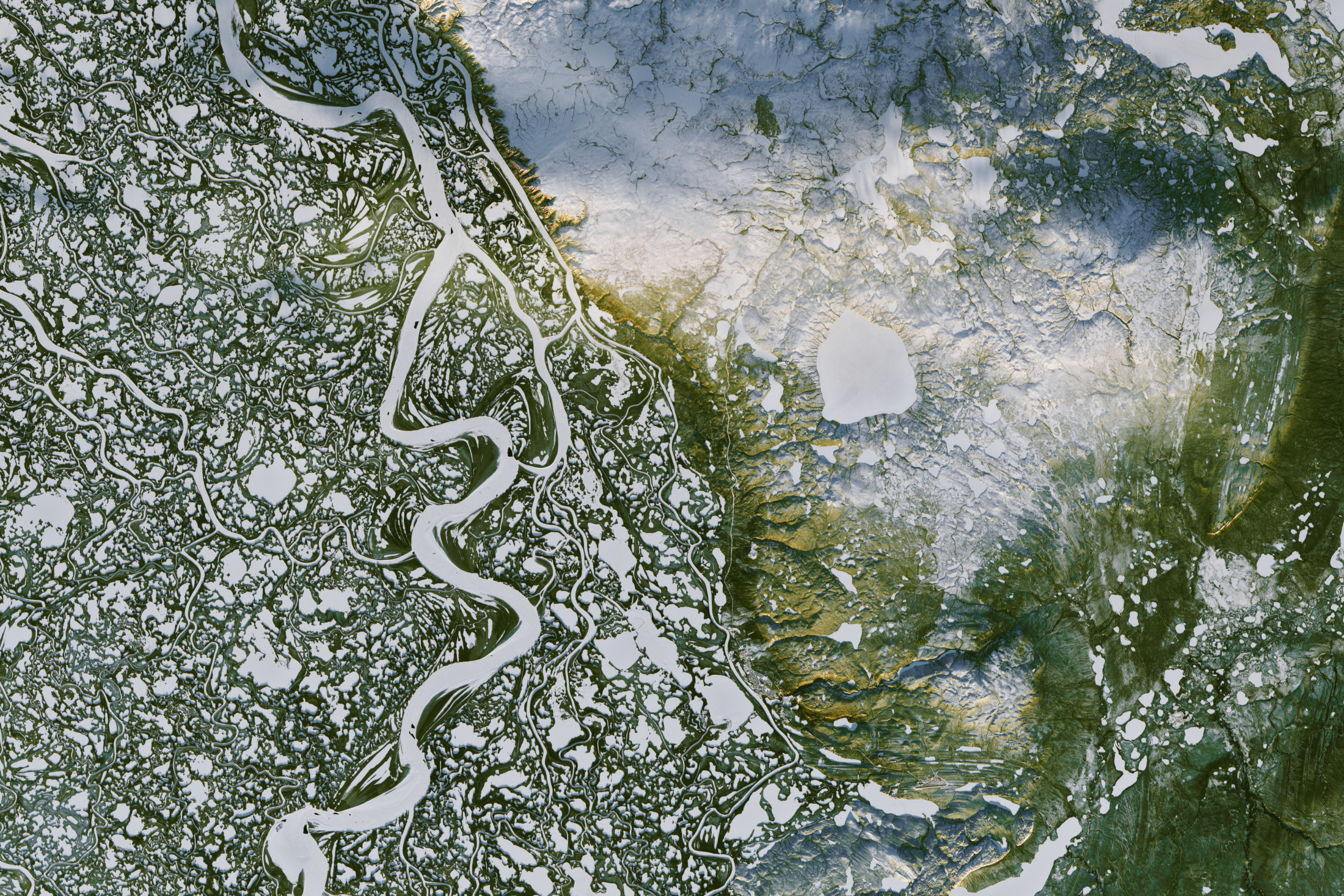
The Mackenzie River system is Canada’s largest watershed, and the tenth largest water basin in the world. Parts of the watershed sit atop permafrost, making it vulnerable to climate change. Approximately 40 per cent of Canada’s landmass overlays permafrost. Photo: Joshua Stevens / NASA Earth Observatory
Brown, the chair and founder of the Permafrost Carbon Feedback Action Group, said the team will compile a final report on the dialogue series. But the group’s work won’t stop there.
They plan to meet with officials in the federal government, engage with partners in other Arctic countries and push to ensure the challenge of permafrost carbon is on the agenda at international climate meetings in the fall.
“The permafrost carbon feedback is a legitimate issue of concern and is an active area of scientific inquiry,” Cecelia Parsons, a spokesperson for Environment and Climate Change Canada, said in an emailed statement in response to questions from The Narwhal.
The department “continues to work on advancing the incorporation of permafrost carbon feedback in our earth-system modelling to further our understanding of its influence on climate change,” she added.
One message that came through clearly during the discussions is the need for Indigenous and northern communities to be actively involved in the work to address both climate change broadly, and permafrost thaw in particular.
During the final dialogue, Natan Obed, president of the national Inuit organization Inuit Tapiriit Kanatami, said he’s “talked about not wanting to be the canary singing in the coal mine alone.”
He wants to do more than ring the alarm bells.
“I also want to be part of the way in which we solve this challenge,” he said.
“We need to work together,” he said.
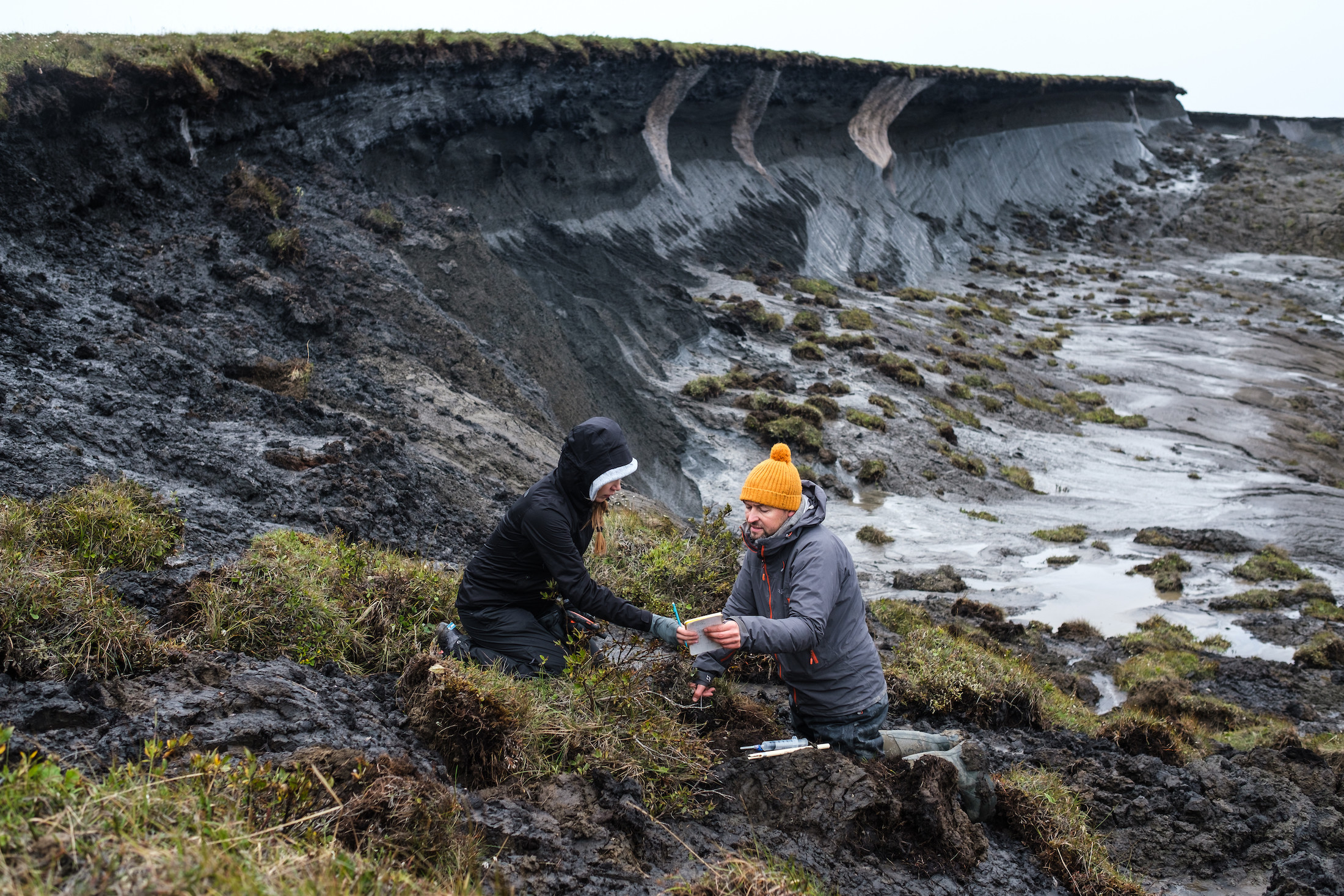
Charlotte Irish, Tuktoyaktuk’s monitoring program coordinator, assists Paul Mann from Northumbria University with gas sampling in a permafrost slump on Hooper Island. The samples can provide insight into concentrations of greenhouse gases released by thawing permafrost. Photo: Weronika Murray / The Narwhal
For the North, the challenge of permafrost thaw is about more than emissions: it also raises substantial concerns for infrastructure built on increasingly unstable land.
“Permafrost thaw is at the heart of the challenges that we are going to face in our communities and also in our homelands outside of our communities for the next generation — not only because of the risk of further elevated emissions,” Obed said.
Vital community infrastructure is under threat from permafrost thaw in Inuit Nungangat, the Inuit homeland in Canada. Adapting to these challenges is a key priority in the National Inuit Climate Change Strategy, which calls for investments in widespread hazard mapping, vulnerability assessments and infrastructure that can withstand the changing climate.
The Northwest Territories is facing similar challenges, with more than $1 billion worth of infrastructure at risk from permafrost thaw, according to Canada’s latest climate plan.
In the Dehcho region, First Nations have partnered with researchers, combining Dehcho knowledge with western science, to better understand and adapt to the impacts of climate change in the region.
Dehcho First Nations are working to develop a climate change strategy of their own and through the Dehcho Collaborative on Permafrost, a partnership with the Scotty Creek Research Station run by Wilfrid Laurier University, they are working with scientists to develop a regional permafrost map and monitor permafrost changes.
This work is critical: even if the world were able to wrestle the greenhouse gas emissions generated by people to zero tomorrow, more permafrost would thaw because of emissions that have already been emitted.
“Understanding what that change is going to look like is what occupies most of my effort,” Steve Kokelj, head of permafrost science at the Northwest Territories Geological Survey, told The Narwhal.
It’s a complex task.
“Permafrost thaw means very, very different things for different environments and consequently, it also means very different things for the people that live in the North, depending on where you are,” Kokelj said, noting some areas may experience landslides while others see conversion of forests to wetlands.
Either way, it’s an impact. “Understanding that variability is super important for society to be able to adapt,” he said.
Ultimately, if the goal is to save as much permafrost from extinction as possible, the best chance may lie in the drastic reduction of human-caused greenhouse gas emissions.
“Decarbonization might save some permafrost,” Turetsky said. And saving permafrost could reduce the impacts of the permafrost carbon feedback loop.
One thing is certain, continued growth of global emissions will result in the loss of biodiversity and ecosystems, with arctic and subarctic regions at particularly high risk for irreversible changes.
“Our Elders kept telling us that there’s something that’s going to come to warn us,” Norwegian said. “COVID is just a warning for us that there is more to come — and I think we all know that — if we don’t do anything for climate change.”
“We need to need to do things differently; we need to treat Mother Earth differently,” she said.
Editor’s Note: Norwegian and Violet Jumbo, Dehcho First Nations language manager, also provided a statement in Dene Zhatie to The Narwhal, alongside an English translation.
Get the inside scoop on The Narwhal’s environment and climate reporting by signing up for our free newsletter. A $335 million funding commitment to fund...
Continue reading
In Alberta, a massive open-pit coal mine near Jasper National Park is hoping to expand...

A trade war could help remake B.C.’s food system, but will family farmers be left...

First Nations are leading efforts to make sure lake sturgeon can find a home in...
